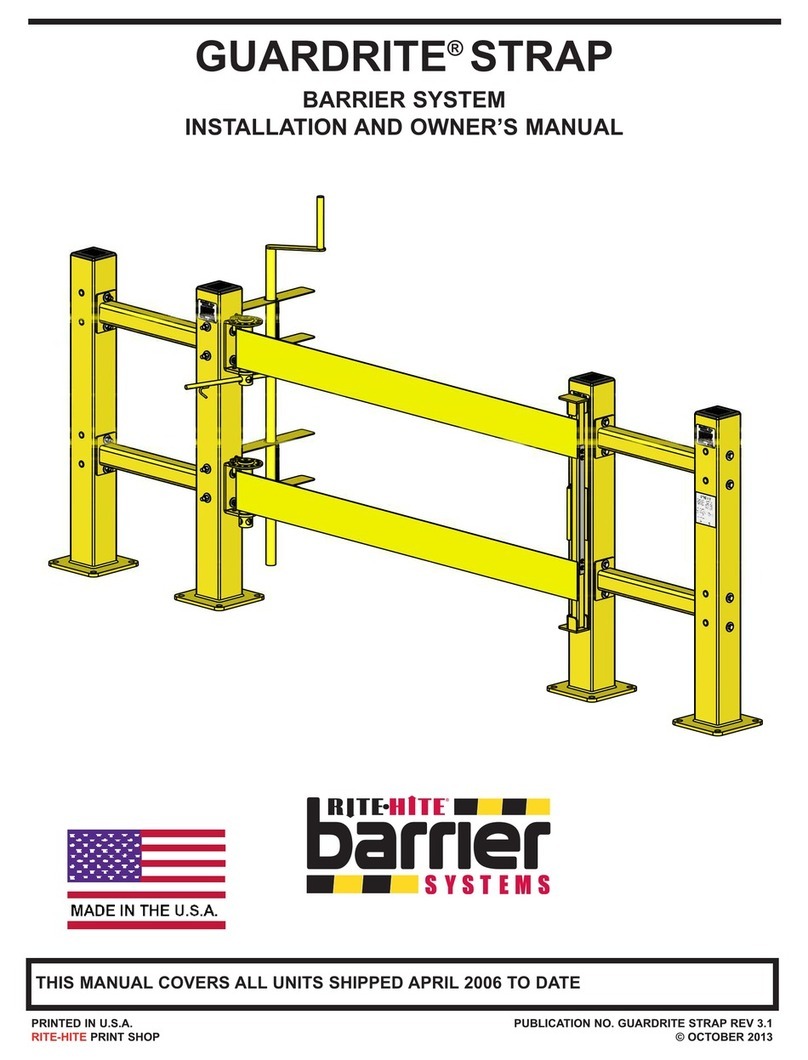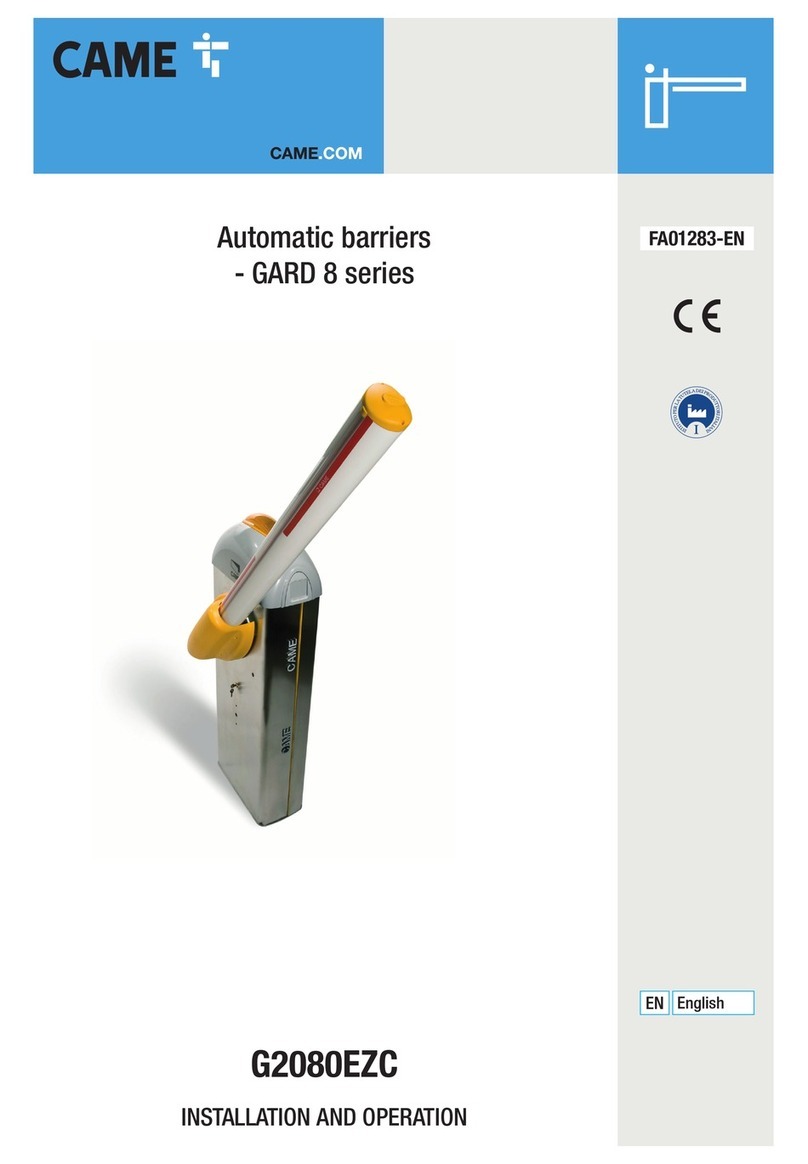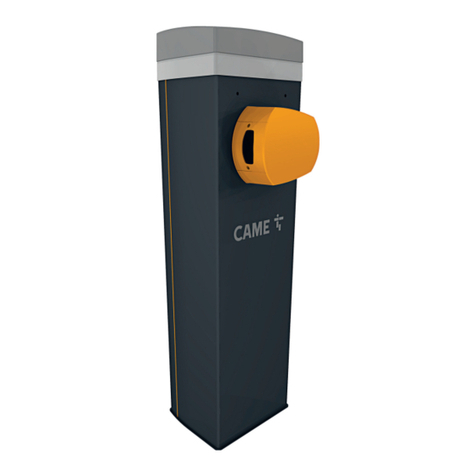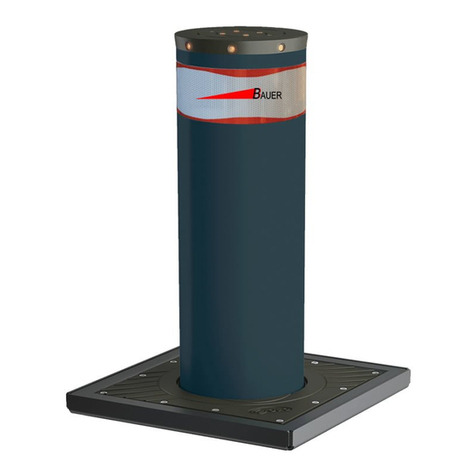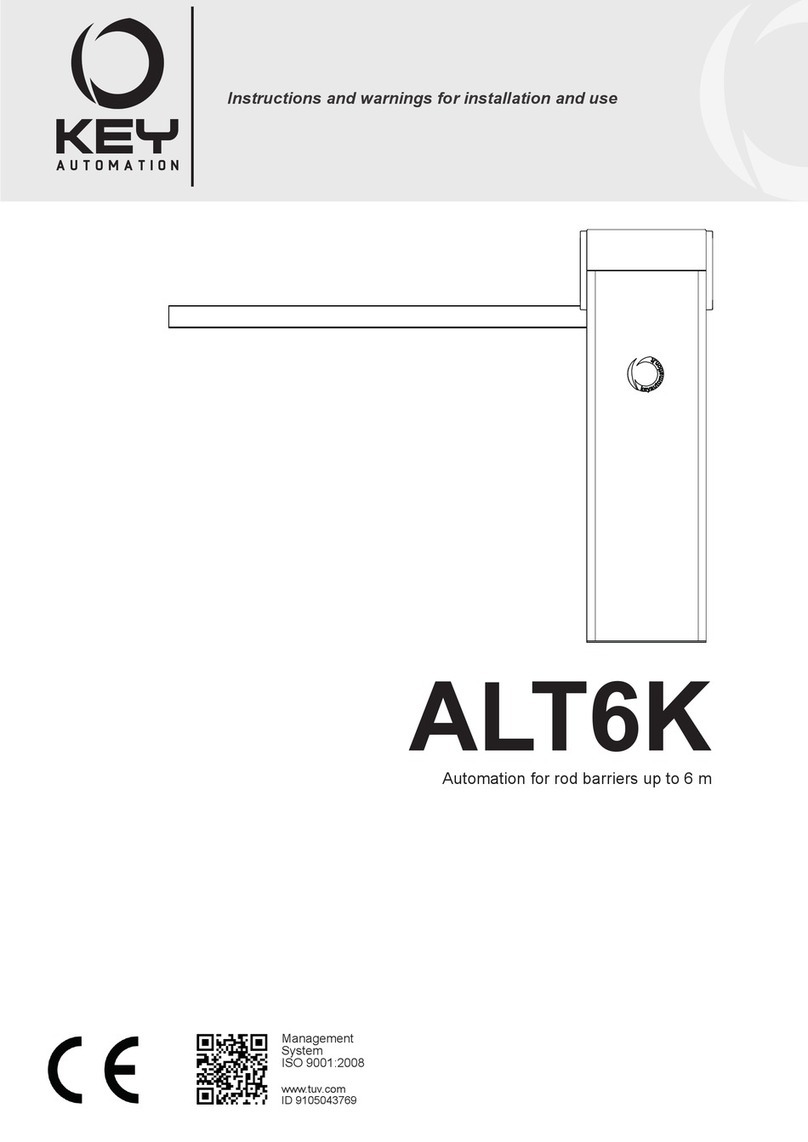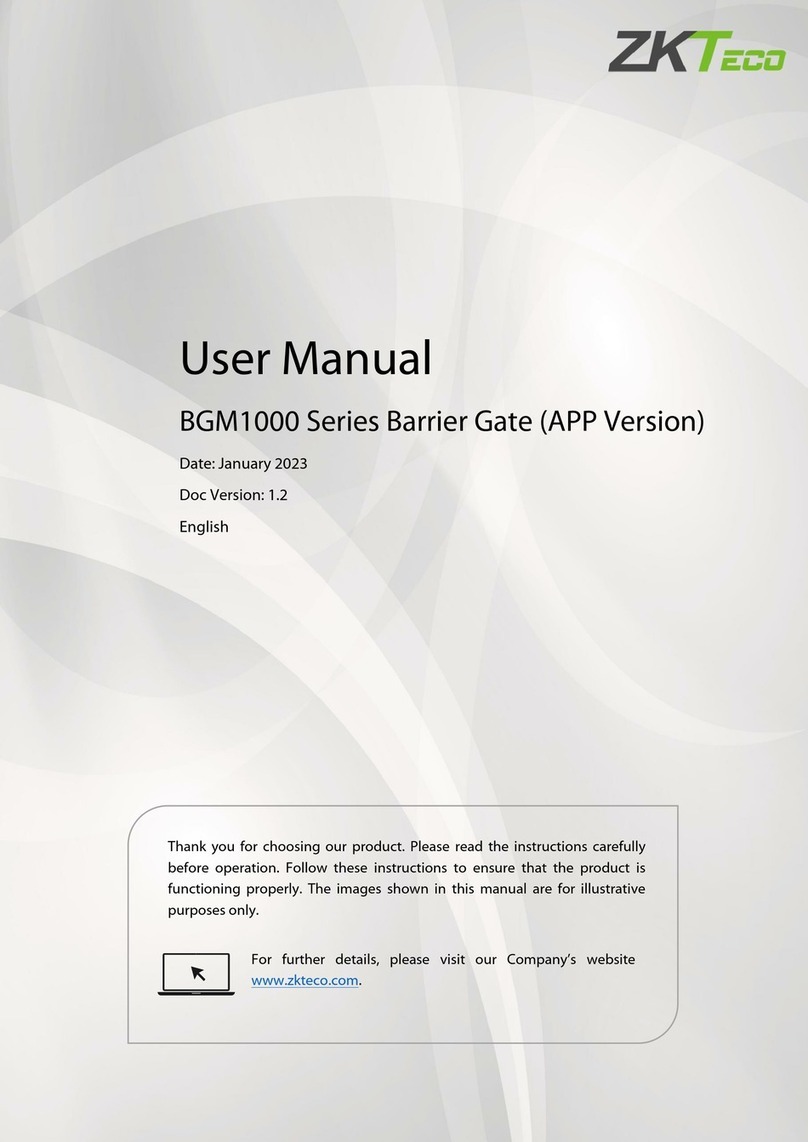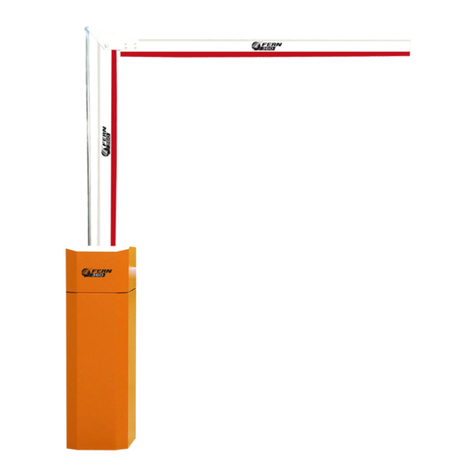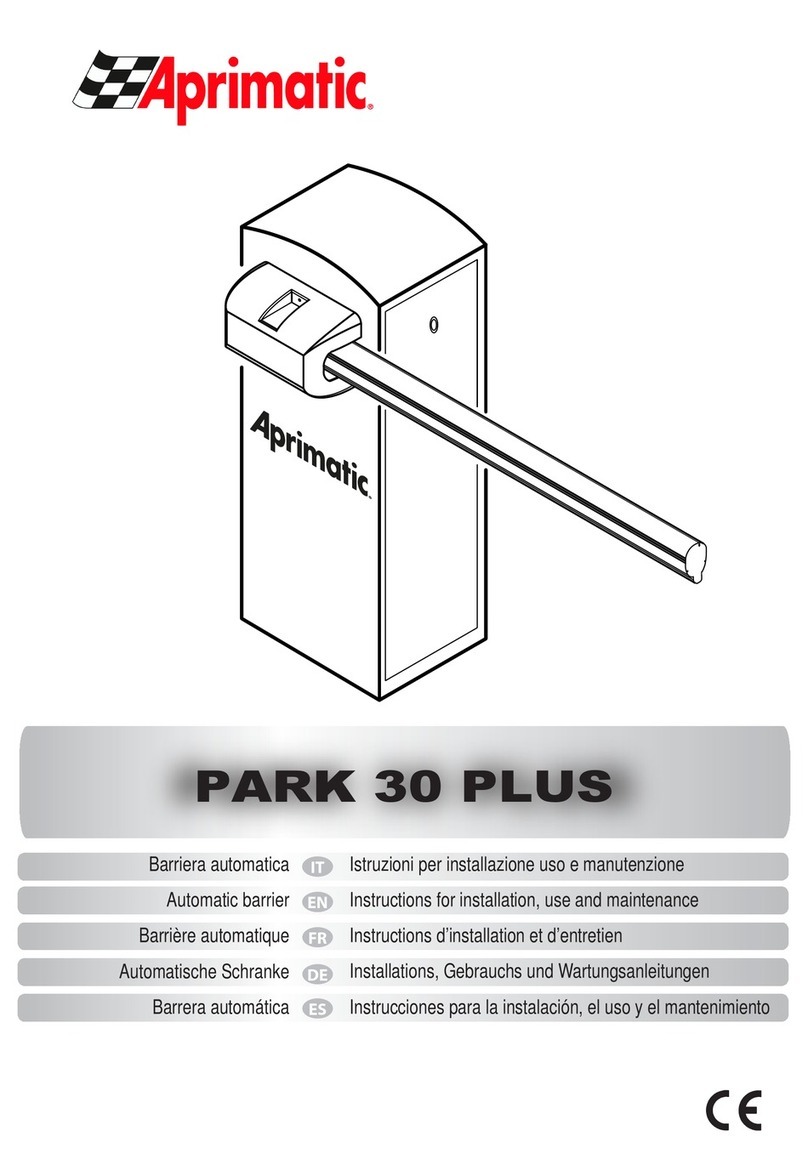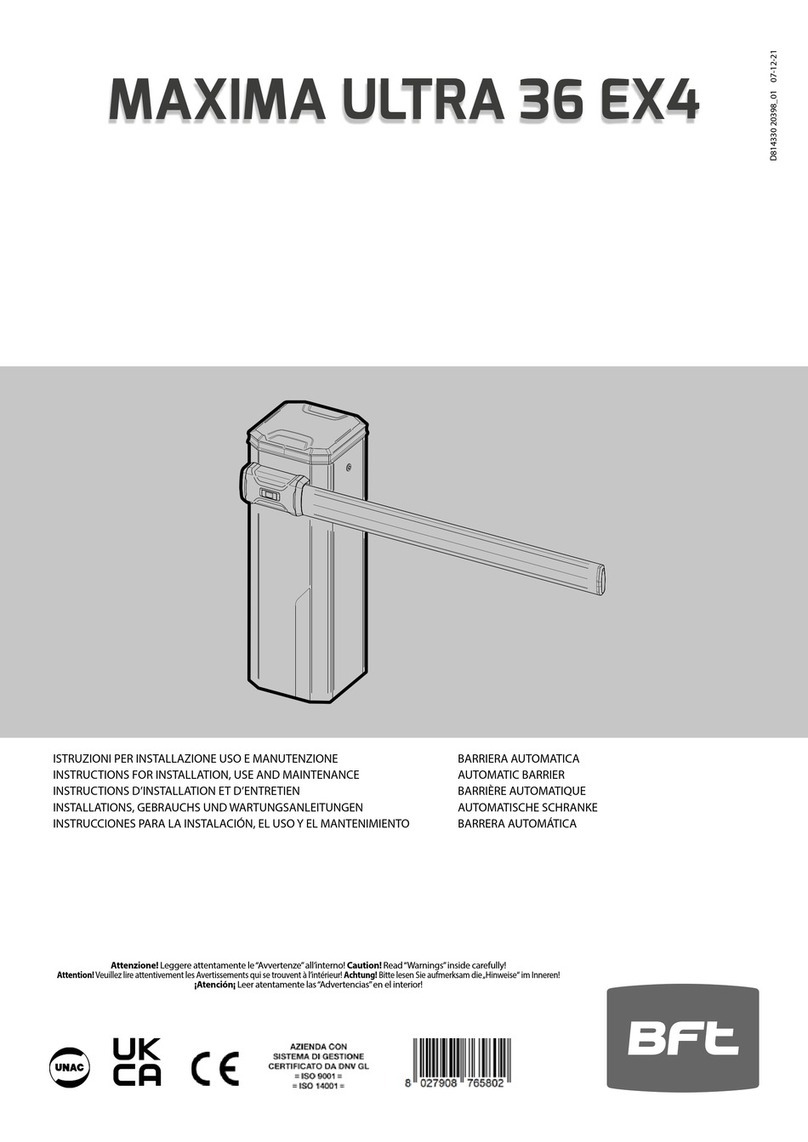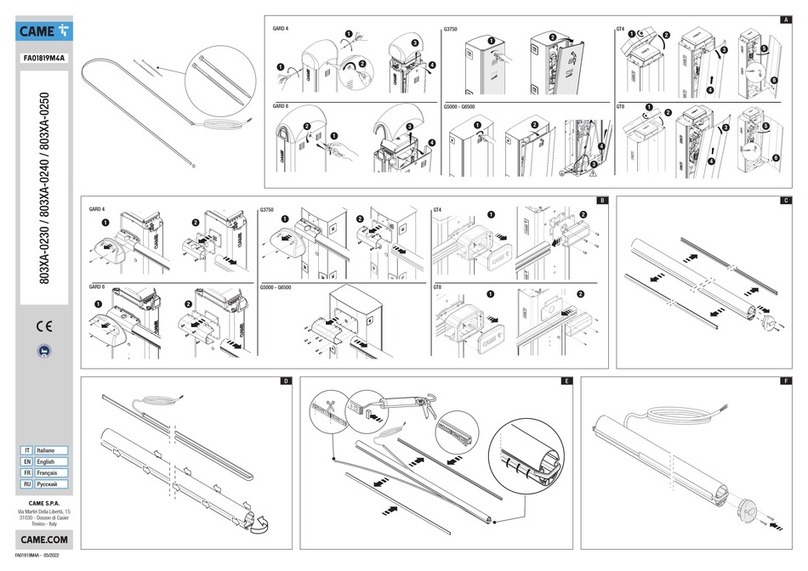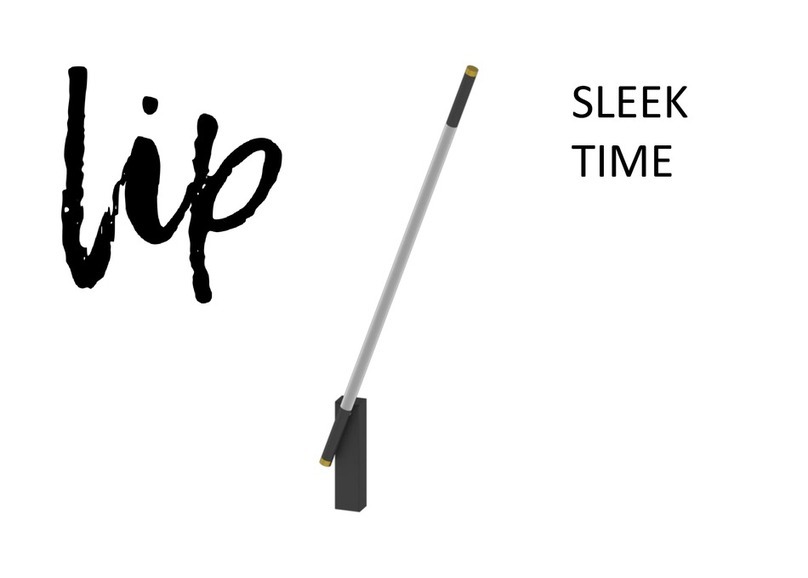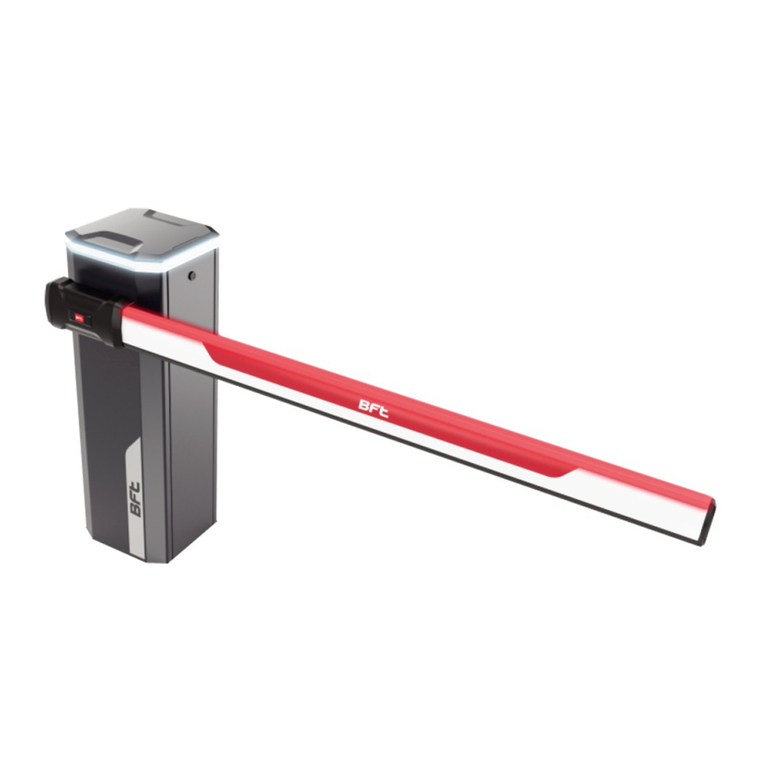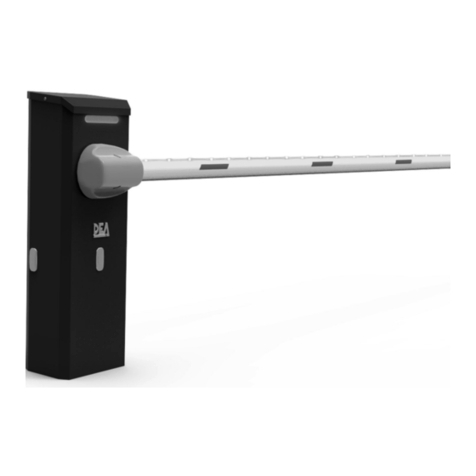
Maintenance Manual
May 2021 Page10 of60
General Fault in
Active Alarm Screen
and Alarm History
Encoder Communications bad to
actuator (Green Cable). Internal
Encoder in Actuator bad.
Go to drive status and see if the position
number is **** (no number) inspect the
green encoder cable/wires and then replace
actuator- if there is a position number,
command thebarrier to moveand then see
detailed alarm in drive status - E31 and E07
= replace actuator.
If the Condition still
exists, contact RSSI
Lossof Power Alarm
on active alarm
screen
BBP has experienced
Loss of normal power
Test incoming power to BBP at CB1, if good,
check battery output at inverter (24-26vdc) then
clear active alarm by pressing ALARM
RESET on maint touch screen main menu.
Alarm should clear (Green
No Alarms)on mainttouch
screen main menu.
If the Condition still exists,
call RSSI
E09 –Bus under
voltage on active
alarm page or in
alarm history.
Barrier stops in mid
Motion
Incoming main power too low for
load
Check voltage (208-240v) while running
barrier at BBP at CB1. If less than208v,
incoming power is too low.
Contact Electric provider to provide 208-240v
Confirm Electrical voltage
If confirmed and condition
still exists, Call RSSI
Servo Drive Resistor Bad in BCP
or Drive Box in Barrier
Replace Resistor inside BCP or replace Servo
Drive Box inside barrier vault.
If the Condition still
exists, contact RSSI
E19 in Active or
Alarm History page
Physical stoppageof Motion.
Did not reach preset position due
to high amps or increase in load.
Check for broken springs or misalignment.
Remove the load from actuator and run barrier
from Maint touch screen (barrier control) if the
actuatorrod extends and retractsnormally with
very low amps, there is a mechanical issue, if
the amps stay very high, then replace actuator.
If the Condition still
exists, contact RSSI
Barrier has slowed
down moving to up
position, hesitates,
jerky motion
Check spring assembly for broken springs;if
found replace
Refer to Component Repair
Section for Spring
Replacement Procedures
The barrier safety
loops don't detect
vehicles
Retune loop detector by removing and inserting
front plug with novehicle on loop. Indicator
lights should display solidgreen when tuned.
Retest loop detector, if the
Condition still exists, check
item #14.
The barrier safety
loops don't detect
vehicles
Retest, if the Condition still
exists, check item #15.
The barrier safety
loops don't detect
vehicles
Bad safety loop in roadway
Inspect roadway for cracks through Safety
Loop wires. Replace if bad.
Safety Loop Installation can
be found in the Installation
Manual,
Retest safety loop, if the
Condition still exists after
checking items #13, #14 &
#15, call RSSI
Touchscreens hard to
operate or
touchscreen area
controls seem out of
alignment
Touchscreen mount clipstoo tight
On back of touchscreen locate 4 black mount
clips and loosen excessively tight clips,
reposition clips evenly.
Check operation of
touchscreen
If condition still exists,
check item#17
Touchscreens hard to
operate or
touchscreen area
controls seem out of
alignment
Check operation of
touchscreen
Refer to Atch 16, Replace
and Setup Touch Screen
If condition still exists, after
checking item #16 & #17,
Call RSSI
Actuator heat pad not
heating up
Thermostat not set properly
Confirm thermostat is set to 50% on dial.
Retest heat, if the Condition
still exists, check item # 19.
